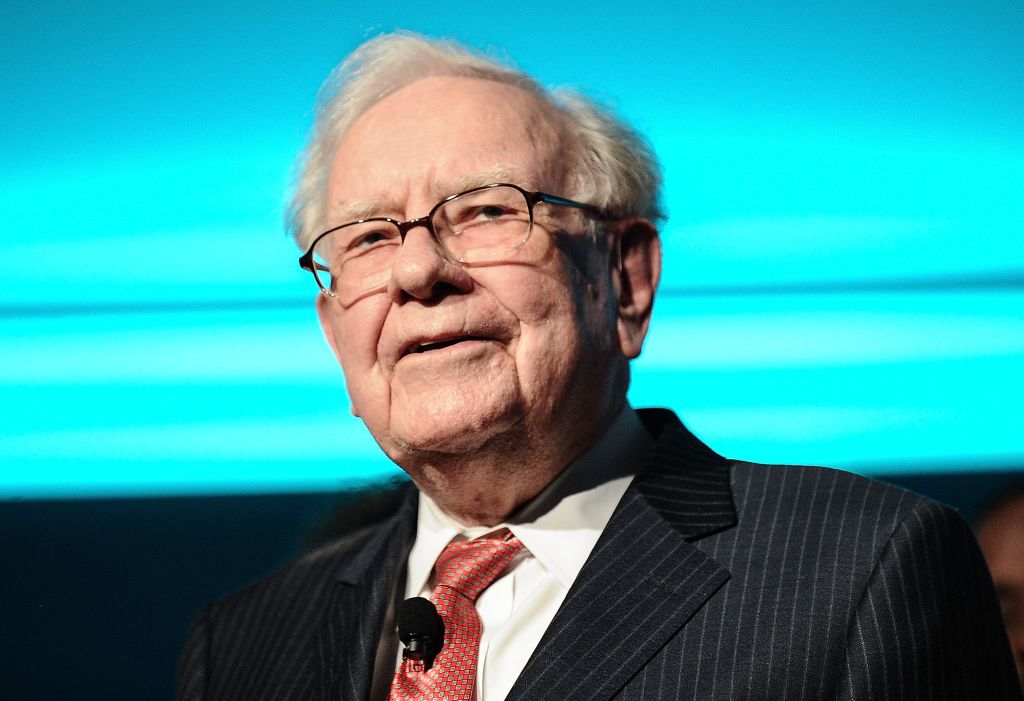By Betsy Schiffman
Falling prices may sound appealing, but the phenomenon known as deflation can devastate an economy. A stubborn deflationary cycle could stunt the U.S. economy for years while chopping the value of Americans’ hard assets (such as homes) and contributing to an erosion of stock prices.
Although many economists dismiss deflation as a remote possibility, recent data suggest we may already have caught a mild case of it. The real questions are how long prices will remain depressed and whether they will fall much further. The consumer price index (a measure of the change in prices for goods and services in the U.S.) slipped in June for the third consecutive month, but over the past 12 months the index has climbed 1.1%. Kiplinger’s forecasts inflationof 1% in 2010 and 1.5% next year.
From just $107.88 $24.99 for Kiplinger Personal Finance
Become a smarter, better informed investor. Subscribe from just $107.88 $24.99, plus get up to 4 Special Issues

Sign up for Kiplinger’s Free Newsletters
Profit and prosper with the best of expert advice on investing, taxes, retirement, personal finance and more - straight to your e-mail.
Profit and prosper with the best of expert advice - straight to your e-mail.
There’s no formal definition of deflation. However, economists generally agree that if prices fall substantially (say, more than 1%) over a sustained period (at least a year), an economy may be entering a deflationary cycle.
But talk of possible deflation is becoming increasingly common. One guru warning of the threat is Bill Gross, who runs Pimco Total Return (PTTAX), which, with assets of $239 billion, is the world’s largest mutual fund. Also sounding the alarm is James Bullard, president of the Federal Reserve Bank of St. Louis. Bullard recently warned that the U.S. is closer to “Japanese-style [deflation] today than at any time in recent history.”
Grim scenario
What does a deflationary period look like? At first glance it looks much like a recession. Consumer spending declines, job creation stalls and the unemployment rate remains high. With prices dropping, the consumer’s incentive to buy today yields to an incentive to wait for cheaper prices tomorrow. That lack of demand further depresses prices, creating a deflationary spiral. And banks make it even harder for people and businesses to obtain loans given that the value of assets would follow the spiral downward.
One key difference between a standard recession and a deflationary cycle is that a recession, on average, lasts less than a year, but deflation can plague an economy over many years. Japan famously suffered nearly ten years of economic stagnation (the so-called “lost decade”) because of a long period of deflation that followed the bursting of an asset bubble in 1991.
This kind of environment would almost certainly put pressure on the price of hard assets, such as real estate and metals (although not necessarily gold, which moves in its own orbit). Deflation would also hurt corporate profits, which would be negative for most kinds of stocks.
Prudent moves
So how do you prepare for the possibility of deflation without going overboard? If you don’t already have healthy cash reserves, now wouldn’t be a bad time to beef them up. “Many investors worry about low returns on cash, but because other assets lose value, a low return is fine,” says Rob Williams, director of income planning at Schwab. “Keeping cash helps you preserve what you have.”
Next, consider putting a chunk of money in U.S. Treasuries, another deflation-proof investment. Worried about deflation and seeking a supposedly safe investment for turbulent times, many investors have been flocking to Treasuries, pushing up their prices and lower their yields (bond prices and yields move in opposite directions). The yield on the ten-year Treasury stood at 2.9% in early August, a full percentage point below the yield in early April. But even that paltry return will sparkle if consumer prices fall. For example, if prices fall 1% and you collect 3% interest from a Treasury, you in effect earn a real return of 4%. That’s not too shabby.
If you’re really confident about deflation, you should buy zero-coupon Treasuries. Zeros are bonds that are sold at a steep discount to face value and pay no interest until maturity. With zeros, you don’t have to worry about reinvesting your interest coupon. But zeros are volatile and will take a beating if rates rise, as they will someday.
Intermediate-term Treasuries will do just fine as a deflation hedge. The danger in moving to long-term Treasuries is that in the unlikely event that inflation takes off, their value would probably plummet. Of course, even intermediate-term Treasuries will suffer somewhat with higher inflation. Two solid choices in Treasury funds are T. Rowe Price U.S. Treasury Intermediate (symbol PRTIX) and Vanguard Intermediate-Term Treasury (VFITX).
You can also use exchange-traded funds to bet on higher Treasury prices and falling yields. For example, the iShares Barclays 20+ Year Treasury Bond Fund (TLT) tracks a long-term index. Year-to-date through August 6, the fund gained 13.7%. Proshares and Direxion offer leveraged Treasury ETFs.
Next, consider other types of bond funds, and be sure to diversify. Funds holding high-quality bonds pay regular income and should also rise in price if deflation takes hold. The Kiplinger 25, the list of our favorite open-end mutual funds, includes Dodge & Cox Income (DODIX), Harbor Bond (HABDX), Loomis Sayles Bond (LSBRX) and Fidelity Intermediate Municipal Income (FLTMX), the last being suitable for investors in a high income-tax bracket.
That doesn’t mean you should put all your eggs in a basket of bonds. Says Mark Kiesel, a managing director at Pimco: “Extreme inflation or extreme deflation probably won’t materialize. What is likely is slow growth with modest inflation.” We agree. And given that scenario, you won’t want to exit stocks entirely.
Deflation and stocks
Some stock-market sectors would perform poorly in a deflationary scenario. Among them are industries, such as lodging, airlines and autos, that have high overhead costs and experience big drops in revenue as prices drop.
By contrast, the health-care sector could be a safe haven. Prices in health care have outpaced growth in gross domestic product for years, and they’ll probably continue to do so. Among the names likely to perform well is Swiss drug maker Roche (RHHBY.PK, $34), says Alex Morozov, an associate director of equity research at Morningstar. Roche, which acquired biotech pioneer Genentech last year, has a portfolio that includes a number of cancer drugs, which are likely to hold their prices even in a deflationary environment. Morozov also likes Novartis AG (NVS, $50), another Swiss drug maker that he thinks can counter deflationary pressures by raising prices regularly. For similar reasons, Morozov recommends medical-device makers Stryker (SYK, $48) and Medtronic (MDT, $38). Both companies may also benefit from a recent pledge by the Food and Drug Administration to accelerate the approval process for medical devices.
If you prefer funds over individual stocks, consider Vanguard Health Care (VGHCX). Managed since 1984 by Edward Owens, the fund owns mostly large and midsize companies -- its three biggest holdings are Merck (MRK, $35), Forest Laboratories (FRX, $28) and Pfizer (PFE, $16). Over the past five years through August 6, it returned 3.5% annualized, beating Standard & Poor’s 500-stock index by an average of nearly three percentage points per year. One downside: Vanguard Health requires a $25,000 minimum investment.
For an indexed approach, check out Vanguard Health Care ETF (VHT). Its largest holdings are Johnson & Johnson (JNJ, $60), Pfizer and Merck. The exchange-traded fund gained 1.2% annualized over the past five years. Also consider iShares Dow Jones U.S. Medical Devices ETF (IHI). It has half of assets in small and midsize companies, but its top three positions include Medtronic and Stryker, in addition to Thermo Fisher Scientific (TMO, $46). Over the past three years, the ETF lost an annualized 2.5%, which is four points per year ahead of the S&P 500.
Consumer staples, the stuff people buy regardless of the health of the economy -- food, soap, toiletries -- should also fare well in a time of deflation. Stuart Freeman, chief stock strategist for Wells Fargo Advisors Advisory Services, recommends PepsiCo (PEP, $66), which owns, among other things, its namesake beverage, Lay’s potato chips and Cracker Jack -- precisely the kinds of things Americans can’t seem to live without. Or consider Clorox (CLX, $65), the maker of its like-named bleach, Pine-Sol, S.O.S. and other household products. Americans will undoubtedly keep cleaning their dwellings no matter the health of the economy. A good consumer-oriented ETF is iShares Dow Jones U.S. Consumer Goods Fund (IYK). Its three biggest positions are Procter & Gamble (PG, $60), Coca-Cola ([Link]KO, $57) and PepsiCo. The ETF gained an annualized 3.9% over the past five years.
Profit and prosper with the best of Kiplinger's advice on investing, taxes, retirement, personal finance and much more. Delivered daily. Enter your email in the box and click Sign Me Up.
-
 23 Last-Minute Gifts That Still Arrive Before Christmas
23 Last-Minute Gifts That Still Arrive Before ChristmasScrambling to cross those last few names off your list? Here are 23 last-minute gifts that you can still get in time for Christmas.
-
 The Rule of Compounding: Why Time Is an Investor's Best Friend
The Rule of Compounding: Why Time Is an Investor's Best FriendDescribed as both a "miracle" and a "wonder," compound interest is simply a function of time.
-
 4 Great Tools to DIY Your Own Financial Plan
4 Great Tools to DIY Your Own Financial PlanSmart Savings Several tools picked out by Kiplinger that DIYers can use to make their own financial plan.
-
 If You'd Put $1,000 Into Coca-Cola Stock 20 Years Ago, Here's What You'd Have Today
If You'd Put $1,000 Into Coca-Cola Stock 20 Years Ago, Here's What You'd Have TodayEven with its reliable dividend growth and generous stock buybacks, Coca-Cola has underperformed the broad market in the long term.
-
 If You Put $1,000 into Qualcomm Stock 20 Years Ago, Here's What You Would Have Today
If You Put $1,000 into Qualcomm Stock 20 Years Ago, Here's What You Would Have TodayQualcomm stock has been a big disappointment for truly long-term investors.
-
 If You'd Put $1,000 Into Home Depot Stock 20 Years Ago, Here's What You'd Have Today
If You'd Put $1,000 Into Home Depot Stock 20 Years Ago, Here's What You'd Have TodayHome Depot stock has been a buy-and-hold banger for truly long-term investors.
-
 If You'd Put $1,000 Into Bank of America Stock 20 Years Ago, Here's What You'd Have Today
If You'd Put $1,000 Into Bank of America Stock 20 Years Ago, Here's What You'd Have TodayBank of America stock has been a massive buy-and-hold bust.
-

 If You'd Put $1,000 Into Oracle Stock 20 Years Ago, Here's What You'd Have Today
If You'd Put $1,000 Into Oracle Stock 20 Years Ago, Here's What You'd Have TodayORCL Oracle stock has been an outstanding buy-and-hold bet for decades.
-
 If You'd Put $1,000 Into Sherwin-Williams Stock 20 Years Ago, Here's What You'd Have Today
If You'd Put $1,000 Into Sherwin-Williams Stock 20 Years Ago, Here's What You'd Have TodaySherwin-Williams stock has clobbered the broader market by a wide margin for a long time.
-
 If You'd Put $1,000 Into UnitedHealth Group Stock 20 Years Ago, Here's What You'd Have Today
If You'd Put $1,000 Into UnitedHealth Group Stock 20 Years Ago, Here's What You'd Have TodayUNH stock was a massive market beater for ages — until it wasn't.
-
 If You'd Put $1,000 Into Berkshire Hathaway Stock 20 Years Ago, Here's What You'd Have Today
If You'd Put $1,000 Into Berkshire Hathaway Stock 20 Years Ago, Here's What You'd Have TodayBerkshire Hathaway is a long-time market beater, but the easy money in BRK.B has already been made.